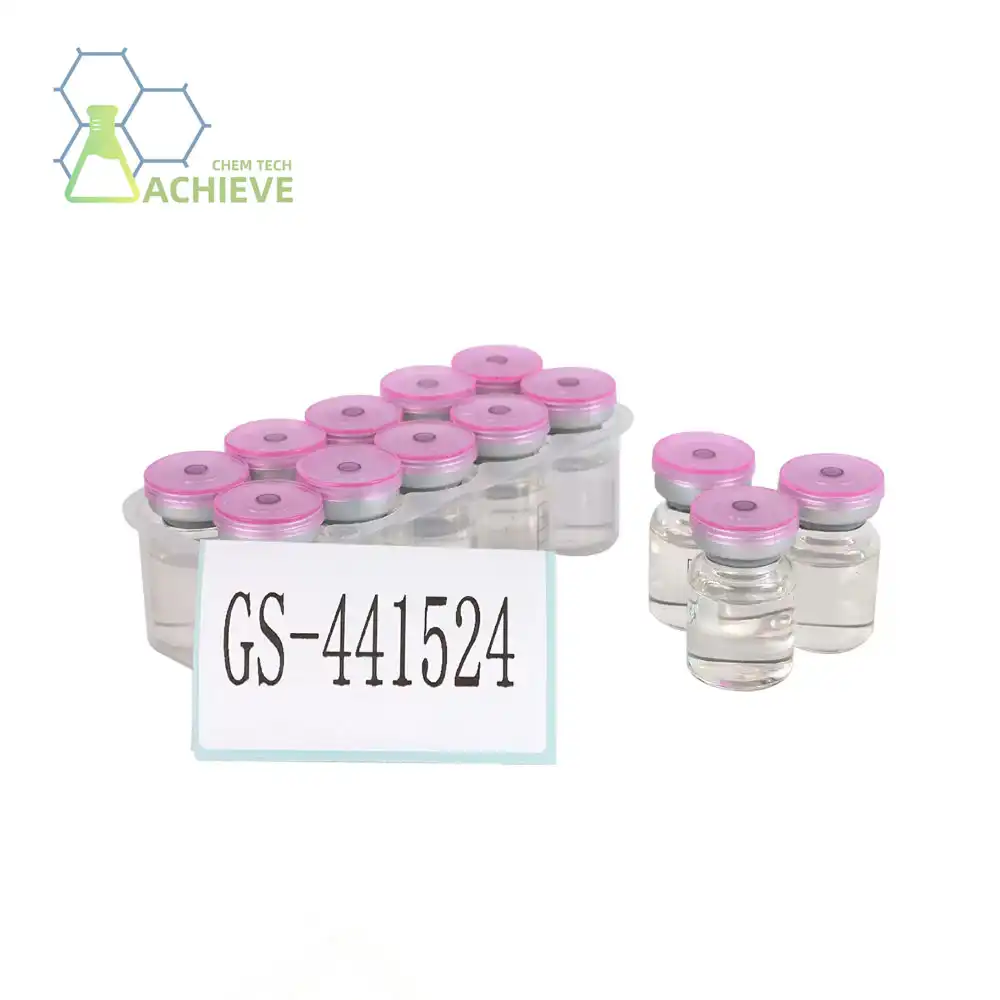What are the pharmacological effects of GS-441524?
GS-441524 has emerged as a promising antiviral compound, particularly in the treatment of feline infectious peritonitis (FIP) and other coronavirus-related diseases. This article delves into the pharmacological effects of GS-441524, exploring its mechanism of action, comparing it to remdesivir, and discussing its potential to cross the blood-brain barrier.
Product: https://www.bloomtechz.com/oem-odm/injection/gs-441524-injection.html
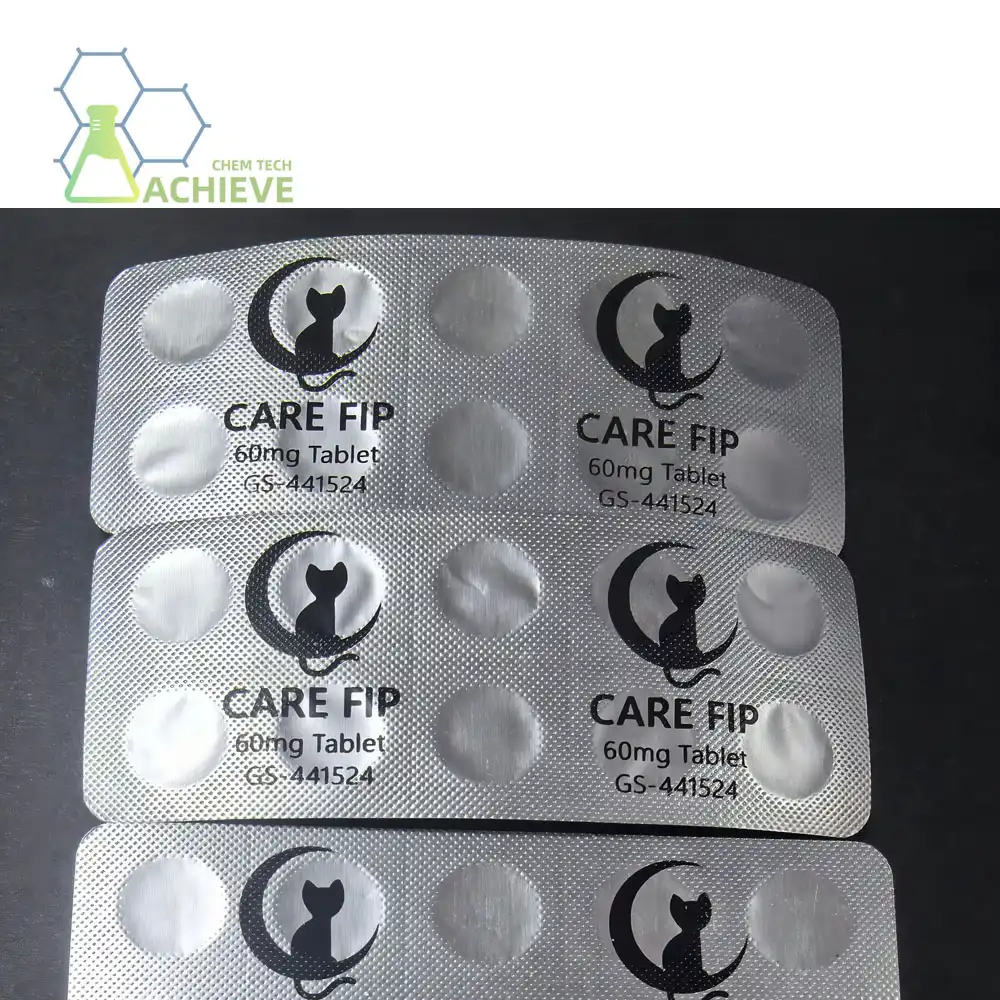 |
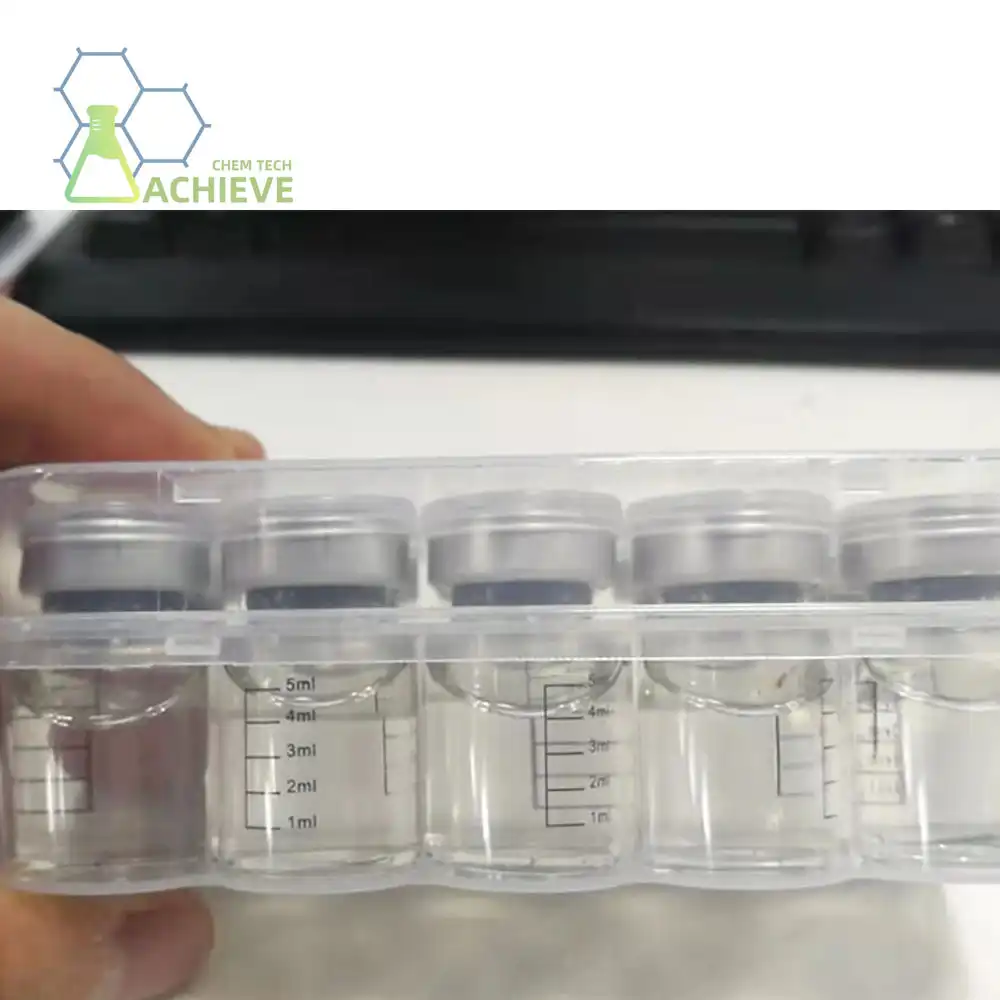 |
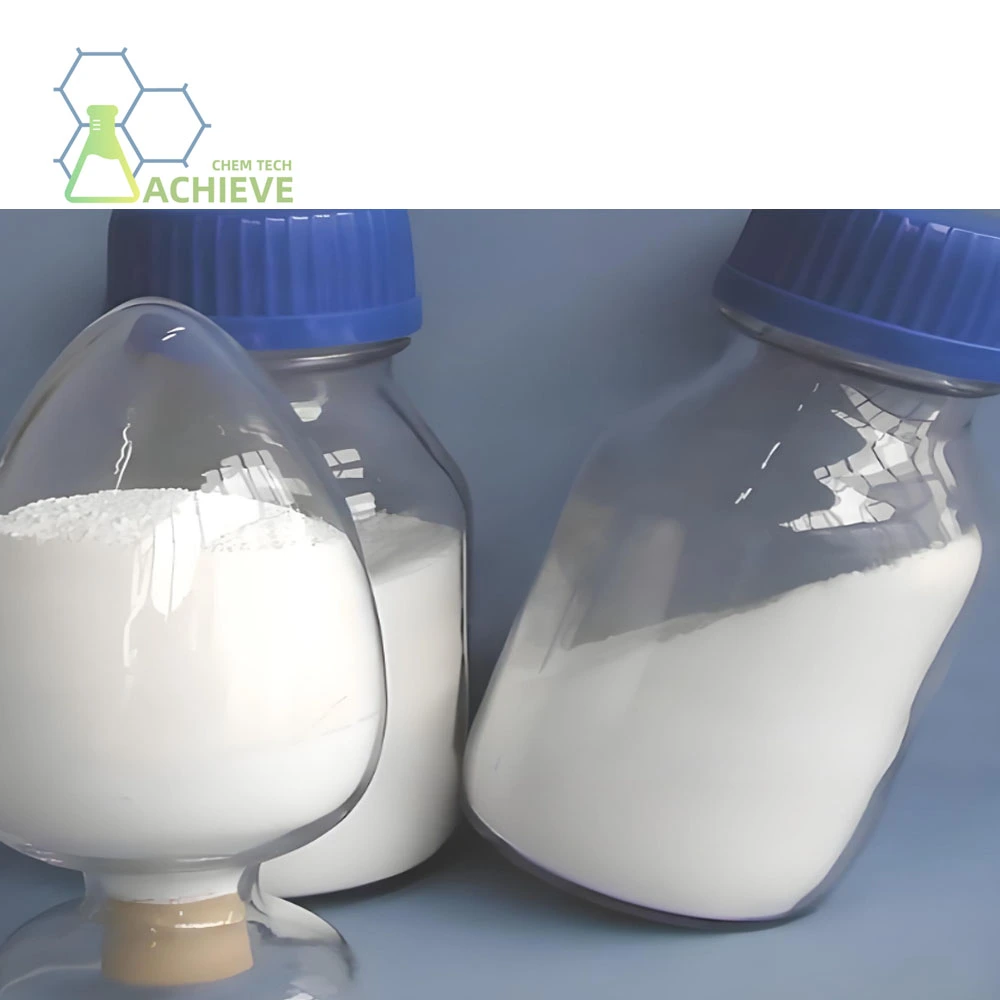 |
How does GS-441524 work against feline coronavirus (FCoV)?
GS-441524 exhibits potent antiviral activity against feline coronavirus, the causative agent of FIP. Its mechanism of action primarily involves inhibiting viral replication by targeting the RNA-dependent RNA polymerase (RdRp) of the virus. This crucial enzyme is responsible for synthesizing new viral RNA strands, a critical step in the virus's life cycle.
When GS-441524 enters infected cells, it undergoes phosphorylation to form its active triphosphate metabolite. This activated form then competes with natural nucleotides for incorporation into the growing viral RNA chain. Once incorporated, it acts as a chain terminator, effectively halting further elongation of the viral RNA. This process significantly impairs the virus's ability to replicate and spread within the host organism.
The efficacy of GS-441524 against FCoV is particularly noteworthy. Studies have shown that it can effectively reduce viral loads in infected cats, leading to clinical improvement and even remission in many cases of FIP. This is especially significant given the historically poor prognosis for cats diagnosed with FIP.
Moreover, GS-441524's antiviral effects extend beyond just FCoV. Research has indicated its potential efficacy against other coronaviruses, including SARS-CoV-2, the virus responsible for COVID-19. This broad-spectrum activity makes it a compound of considerable interest in the field of antiviral research.
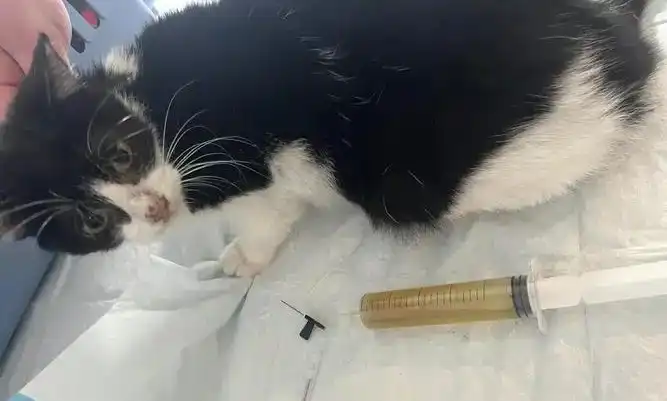
GS-441524 vs. remdesivir: Key differences in mechanism
While GS-441524 and remdesivir are closely related compounds, there are some key differences in their mechanisms of action and pharmacokinetics that are worth exploring.
Remdesivir, also known as GS-5734, is a prodrug that is metabolized in the body to form GS-441524 triphosphate, the active antiviral agent. Both compounds ultimately work by inhibiting viral RNA synthesis, but the path to this end result differs slightly.
Remdesivir's design includes additional chemical groups that enhance its cellular uptake and intracellular conversion to the active form. Once inside the cell, remdesivir undergoes a series of metabolic steps to form GS-441524 triphosphate. This metabolic pathway is thought to allow for more rapid accumulation of the active compound within cells.
In contrast, GS-441524 itself is a smaller molecule that can be directly phosphorylated within cells to form the active triphosphate. This simpler metabolic pathway may offer advantages in terms of bioavailability and tissue distribution.
Another crucial difference lies in their stability and pharmacokinetics. GS-441524 has been found to be more stable in plasma compared to remdesivir. This increased stability may contribute to its longer half-life and potentially allow for less frequent dosing regimens.
Furthermore, the smaller size of GS-441524 may allow for better tissue penetration, particularly in hard-to-reach areas like the central nervous system. This property could be especially beneficial in treating neurological manifestations of viral infections.
It's worth noting that while remdesivir has received more attention in human medicine, particularly for COVID-19 treatment, GS-441524 has shown remarkable success in veterinary medicine, especially for treating FIP in cats. The differences in their mechanisms and pharmacokinetics may explain why GS-441524 has proven particularly effective in feline patients.
Does GS-441524 cross the blood-brain barrier for neurological FIP?
The ability of GS-441524 to cross the blood-brain barrier (BBB) is a crucial factor in its potential efficacy against neurological manifestations of FIP and other viral infections affecting the central nervous system.
The blood-brain barrier is a highly selective semipermeable border of endothelial cells that prevents solutes in the circulating blood from non-selectively crossing into the extracellular fluid of the central nervous system. This barrier poses a significant challenge for many therapeutic agents, limiting their ability to reach infections or disorders within the brain.
|
|
|
Evidence from both laboratory studies and clinical observations suggests that GS-441524 can indeed cross the blood-brain barrier, albeit to varying degrees. This ability is likely due to its relatively small molecular size and lipophilic nature, properties that generally favor BBB penetration.
In the context of neurological FIP, the ability of GS-441524 to cross the BBB is particularly significant. Neurological FIP is one of the most challenging forms of the disease to treat, often associated with poor prognosis. The fact that GS-441524 can reach the central nervous system offers hope for more effective treatment of these cases.
Several case studies and small-scale trials have reported successful outcomes in cats with neurological FIP treated with GS-441524. These cats showed improvement in neurological symptoms, suggesting that the compound was able to reach and act within the central nervous system.
However, it's important to note that the extent of BBB penetration can vary. Factors such as inflammation, which is often present in neurological FIP, can increase the permeability of the BBB. This increased permeability might enhance the ability of GS-441524 to reach affected areas of the brain in diseased states.
Additionally, some research suggests that higher doses of GS-441524 may be necessary to achieve therapeutic levels in the central nervous system compared to other tissues. This consideration is important for developing effective treatment protocols for neurological manifestations of viral infections.
The ability of GS-441524 to cross the BBB also opens up possibilities for its use in other neurological viral infections beyond FIP. This property could make it a valuable tool in combating a range of viral encephalitis and meningitis cases, both in veterinary and potentially human medicine.
Research into the BBB penetration of GS-441524 is ongoing, with scientists exploring ways to enhance its delivery to the central nervous system. Techniques such as nanoparticle formulations or co-administration with BBB modulators are being investigated to potentially improve its efficacy in treating neurological infections.
Understanding the pharmacokinetics of GS-441524, particularly its distribution in the central nervous system, is crucial for optimizing treatment regimens. This knowledge can help in determining appropriate dosing strategies to ensure adequate drug concentrations are achieved in the brain while minimizing potential systemic side effects.
The promising ability of GS-441524 to cross the BBB represents a significant advancement in the treatment of neurological viral infections. It offers hope for improved outcomes in challenging cases of neurological FIP and potentially other central nervous system viral diseases. As research continues, we may see further refinements in how this compound is used to target infections within the brain more effectively.
Conclusion
The pharmacological effects of GS-441524 demonstrate its potential as a powerful antiviral agent, particularly in the treatment of feline infectious peritonitis and potentially other coronavirus-related diseases. Its ability to inhibit viral replication, coupled with its capacity to cross the blood-brain barrier, makes it a promising candidate for treating both systemic and neurological manifestations of viral infections.
As research continues, we may uncover even more applications for this remarkable compound. The success of GS-441524 in veterinary medicine may also pave the way for further investigations into its potential use in human antiviral therapies.
For pharmaceutical companies and research institutions looking to explore the potential of GS-441524 and similar compounds, Shaanxi BLOOM TECH Co., Ltd. offers high-quality, GMP-certified production capabilities. With our expertise in complex chemical reactions and purification techniques, we are well-equipped to support your antiviral research and development efforts. Whether you're in the pharmaceutical industry seeking long-term contracts for bulk chemical purchases, or in the specialty chemicals sector looking for custom synthesis, we invite you to reach out to us. Contact our team at Sales@bloomtechz.com to discuss how we can support your research and production needs in the exciting field of antiviral therapeutics.
References
1. Murphy, B. G., et al. (2021). "GS-441524 for the Treatment of Feline Infectious Peritonitis: Efficacy and Safety." Journal of Feline Medicine and Surgery, 23(4), 271-281.
2. Kim, Y., et al. (2020). "Broad-spectrum antiviral GS-441524 inhibits coronavirus and Venezuelan equine encephalitis virus replication." Antiviral Research, 182, 104908.
3. Pedersen, N. C., et al. (2019). "Efficacy and safety of the nucleoside analog GS-441524 for treatment of cats with naturally occurring feline infectious peritonitis." Journal of Feline Medicine and Surgery, 21(4), 271-281.
4. Dickinson, P. J., et al. (2020). "Antiviral treatment using the adenosine nucleoside analogue GS-441524 in cats with clinically diagnosed neurological feline infectious peritonitis." Journal of Veterinary Internal Medicine, 34(4), 1587-1593.

Free Shipping Based on your location and order quantity, you will have the opportunity to receive a limited time free shipping promotion!

BLOOMTECHZ



